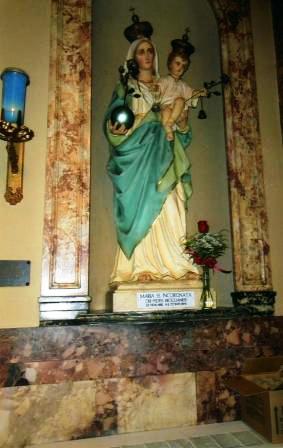
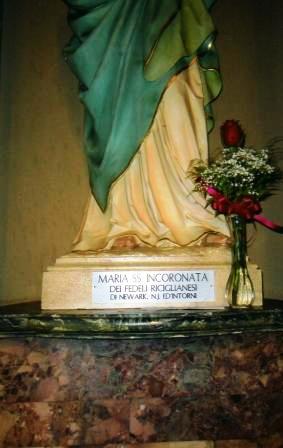
ST. GERARD’S FEAST
By Tom Frascella October 2010
Several of our members had the privilege of attending the St. Gerard Feast on October 16, 2010 at his National Shrine at St. Lucy’s Church, Newark New Jersey.
St. Lucy’s Church is one of the oldest Italian American parishes in the United States and was originally incorporated in 1891 to serve the growing numbers of Italian Immigrants coming to the U.S. The original wood framed structure purchased in 1900 was damaged by fire and the present larger stone structure was built in 1925. The Church is located at 118 7th Ave. in what is known as the old first ward of the City of Newark.
Like all early Italian American communities the first ward was made up of Italian immigrants who reflected strong regional identities rather than an Italian national identity. The art work and statuary of St. Lucy’s Church reflects the devotion to patron saints that many of these early Italian immigrants brought with them from their villages and towns. A tour around the beautiful interior of the Church is in part a tour via the saintly images of the many towns and villages of southern Italy and Sicily. For example, below is a photograph of the statue of the Ma Donna a copy of the image known to the village of Ricigliano.


Statue of Ma Donna Photo of Ma Donna dedication
According to the history of St. Lucy’s Church, devotion to St. Gerard Maiella was introduced to the parish in 1899 by those who immigrated from the town of Caposele in Italy. Caposele is located about ten miles from the town of Muro Lucano where St. Gerard was born in 1726. Since his death in 1755 many miracles have been attributed to his intercession. Gerard was beatified in 1845 and as a result of the numerous miracles attributed to him was recognized as a saint of the Church in 1904.
During the century long devotion to St. Gerard celebrated at St. Lucy’s Church the Church’s chapel which is dedicated to St. Gerard has been recognized as the U.S. national shrine in his honor.
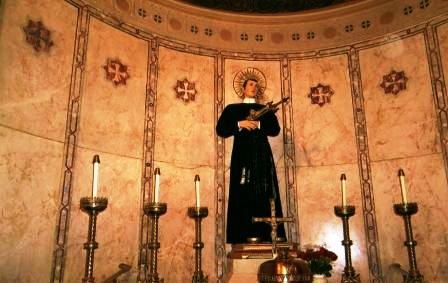
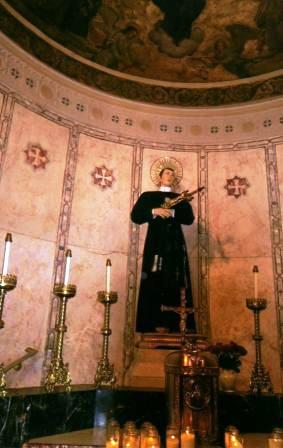
St. Gerard Chapel within St. Lucy’s Church
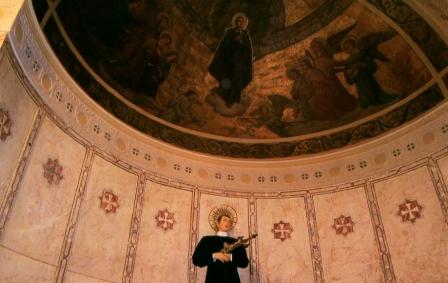
Although, St. Gerard’s feast day is October 16th the faithful of St. Lucy’s parish celebrate his life weeklong with novenas, masses and by decorating the chapel with festive flowers.
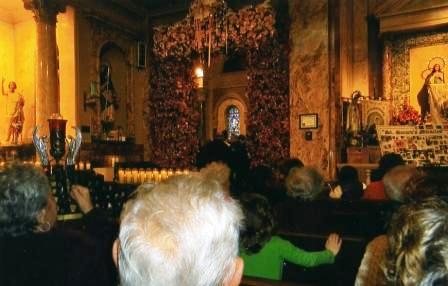
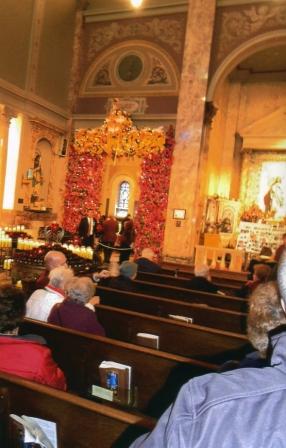
outer doorway to the chapel
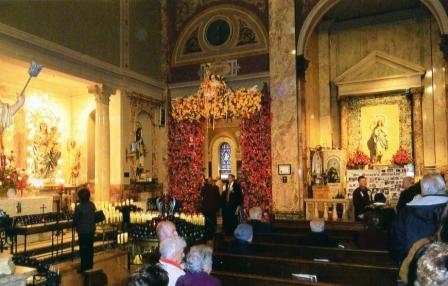
A three day outdoor festival is also held with food stands, colored lights and musical entertainment.
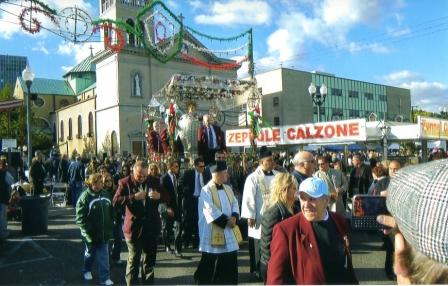
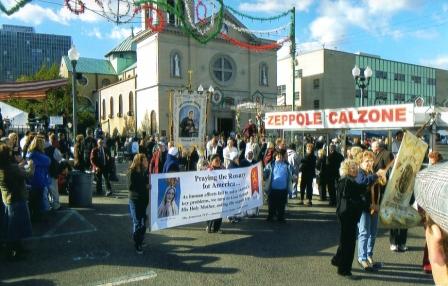
Outdoor festival
During each of the three days of the festival the life-sized likeness of the saint is removed from the chapel and first brought by the side alter. Displayed at the side alter is a photo board that the many faithful of the parish create each year as a testament to the successful but difficult births attributed to the intercession of St. Gerard who is the patron saint of expectant mothers.
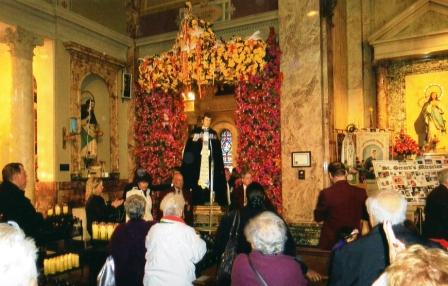
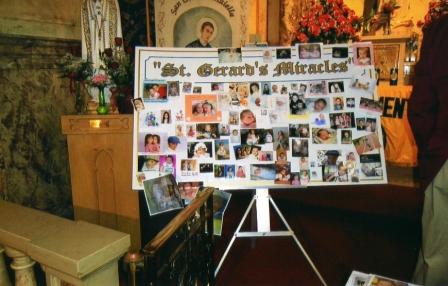
Side Altar Photo Board
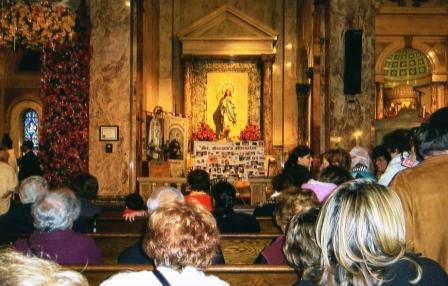
At the main Church alter the statue is prepared for procession through the adjoining neighborhood. In southern Italian tradition when the patron saint was brought out for procession it was common to place offerings with the saint usually the rural currency was produce from the farms. In early Italian American culture the tradition was to actually pin currency to the garment of the statue. At the St. Gerard festival the Italian American tradition continues with something of a unique variation. Although they initially pin some currency on, the parishioners then start to wrap the statue in “blankets” of currency. By the time the statue is ready for the procession the wrap of “blankets” is actually several feet thick.
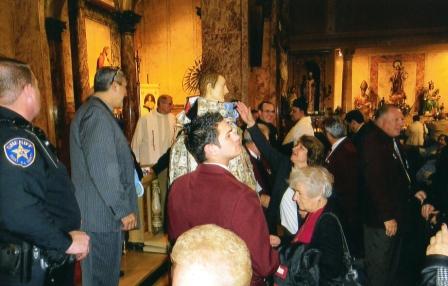
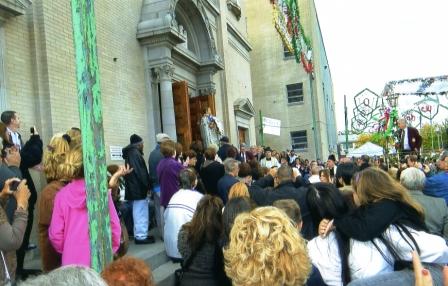
Preparing Statue Statue ready for Procession
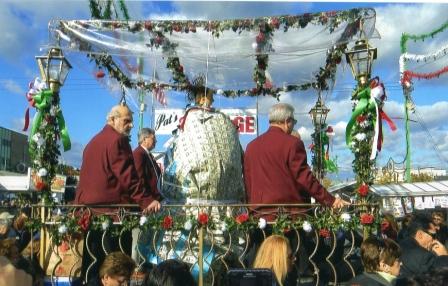
Statue wrapped in "blanket" of currency
The contributions are used to continue the mission of the parish, maintain the chapel and tradition and to build and maintain the outdoor plaza also dedicated to Saint Gerard.
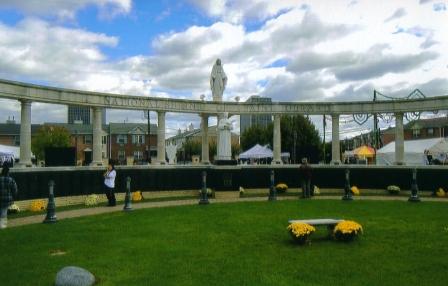
Plaza of St. Gerard
In all I was impressed to spend the day surrounded by so many people of faith and devotion. Like many there we had travelled quite a distance but felt close to home.
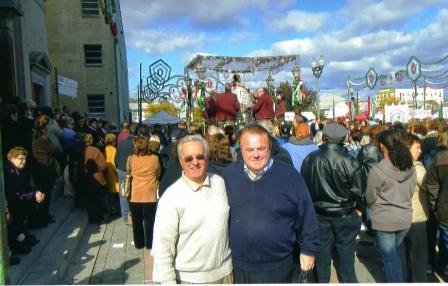
Frank Bruno and Bart DiNola with whom I travelled to Newark
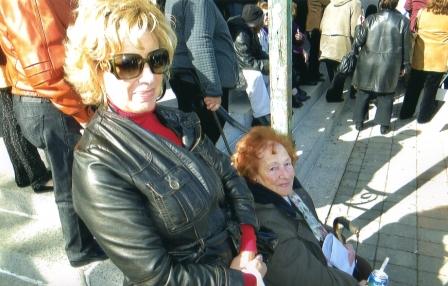
Mary Ricigliano Capaccio and daughter. Mary was born and grew up in the first ward of Newark and attends the feast every year. At age ninety five Mary has recently found us on the internet become a member of our organization
© San Felese Society of New Jersey